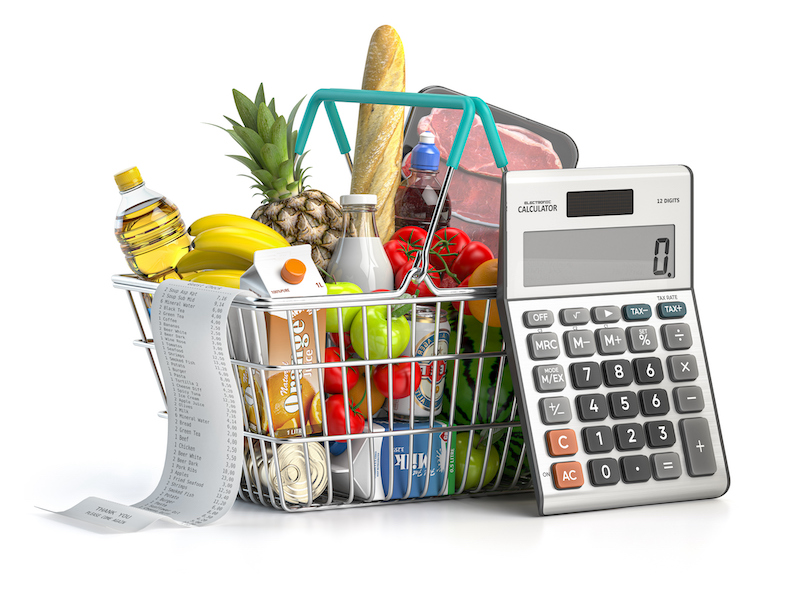
Led by lower food and auto prices, inflation in the United States cooled slightly last month after three elevated readings, likely offering a tentative sigh of relief for officials at the Federal Reserve, as well as President Joe Biden’s re-election team.
Consumer prices rose 0.3% from March to April, the Labor Department said Wednesday, down slightly from 0.4% the previous month. Measured year-over-year, inflation ticked down from 3.5% to 3.4%. And a gauge of underlying inflation, which excludes volatile food and energy costs, reached its lowest level in three years.
Inflation had been unexpectedly high in the first three months of this year after having steadily dropped in the second half of 2023. The elevated readings had dimmed hopes that the worst bout of inflation in four decades was being rapidly tamed.
Whether inflation continues its decline could have a significant effect on the presidential race. Republican critics of Biden have sought to pin the blame for high prices on the president and to use it to try to derail his re-election bid. Though hiring remains robust and wage growth, on average, healthy, consumer prices remain generally well above their pre-pandemic levels.
Wednesday’s report provides a dose of reassurance that the pace of price increases may be resuming its slowdown. While the latest figures show inflation still well above the Fed’s 2% target, it’s the first time this year that the year-over-year figure has declined. And price increases cooled in some service industries, such as hotels, health care and auto repairs, that had previously kept inflation elevated.
The report “was a tiny step in the right direction,” said Danielle Hale, chief economist at Realtor.com. “The fight against inflation is not yet over, but the worsening trend observed in the first quarter of 2024 may have ended.”
Fed Chair Jerome Powell had responded to the high inflation readings earlier this year by dropping his previous suggestions that interest rate cuts were likely in 2024. Instead, he stressed that the Fed’s policymakers need “greater confidence” that inflation is falling to their 2% target before they would reduce borrowing rates from high levels.
Some economists suggest that if inflation — and the overall economy — continue to cool, the Fed could still cut rates twice this year, which would reduce costs for mortgages, auto loans and credit cards, among other forms of borrowing.
A separate report on retail sales, also released Wednesday, showed that Americans’ spending at stores and restaurants was unchanged in April after a healthy gain in March. A more restrained consumer could reassure the Fed that inflation will keep cooling.
Wednesday’s inflation data “keeps alive the prospect of the Fed cutting rates in September,” said Kathy Bostjancic, chief economist at Nationwide Financial. “The weak retail sales data also lends support to that.”
Wall Street traders appeared to agree, sending stock prices higher and bond yields lower in morning trading. The broad S&P 500 stock index rose roughly 0.5% to an intraday record high. The yield on the 10-year Treasury note declined, a sign that traders expect lower interest rates in the future. Mortgage rates, which tend to track the 10-year yield, may also move lower.
Among individual items in April, grocery prices slipped, providing a break to shoppers. Egg prices, which have been volatile after a bout of avian flu, fell 7.3%. New and used car prices also dropped. By contrast, prices for gas and clothing both jumped.
Excluding volatile food and energy costs, so-called core prices rose 0.3% from March to April after three straight months of 0.4% increases. Measured with a year earlier, core prices increased 3.6% in April, down from 3.8% in March. The Fed closely tracks core prices, which tend to provide a better read of where inflation is headed.
In a statement Wednesday, Biden acknowledged that “prices are still too high.” But he said his policies will reduce prescription drug prices and encourage home construction to help ease housing costs. He also called on food store chains to lower grocery prices for consumers.
Donald Trump, the presumptive Republican presidential nominee, meanwhile, charged in a radio interview Wednesday that “it’s a lot of inflation when added to the inflation that we’ve suffered that’s been so bad.”
In a trend that has been frustrating for the inflation fighters at the Fed, apartment rental prices remained stubbornly high in April, climbing 0.4% from March. Average apartment rents are 5.4% higher than they were a year earlier. Rental and other housing costs accounted for two-thirds of the year-over-year increase in core prices.
Rents soared during the pandemic as more Americans chose to live alone or sought more living space. Though rents for new leases are rising much more slowly, consistent with pre-pandemic patterns, the earlier increases are still elevating the government’s price data.
Powell, in remarks in Amsterdam on Tuesday, called rents “a bit of a puzzle” because measures of new apartment leases show new rents barely increasing. Such weaker data has apparently yet to flow into the government’s measures, which cover all rents, including for tenants who renew their leases and are facing bigger increases. Powell said the government’s measures should eventually show rent growth easing.
Powell also reiterated that he still expects inflation to ultimately reach the central bank’s 2% target. But he acknowledged that his confidence in that forecast had weakened after three straight months of elevated price readings. Inflation has fallen sharply from 9.1% in the summer of 2022 but is higher now than in June 2023, when it first touched 3%.
With 11 rate hikes from March 2022 to July 2023, the Fed’s policymakers raised their key rate to a two-decade high of 5.3% in an effort to quell rising prices. Powell underscored Tuesday that the Fed will keep its rate at that level for as long as needed to fully conquer inflation, a signal that rate cuts won’t begin as soon as many people had hoped.